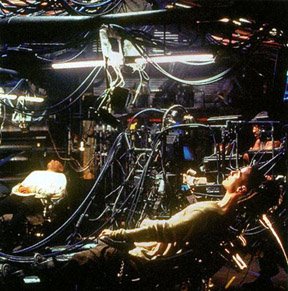"Jacking-in" to Distributed Learning in BC
 Without much media fanfare, the BC Ministry of Education announced that, as of September 2006, any grade 10, 11, & 12 student in BC will be able to take Ministry funded distributed/online courses from any BC online provider. They also announced summer learning at no charge.
Without much media fanfare, the BC Ministry of Education announced that, as of September 2006, any grade 10, 11, & 12 student in BC will be able to take Ministry funded distributed/online courses from any BC online provider. They also announced summer learning at no charge.
Motivation for increasing access to distributed learning (sometimes mistakenly referred to as online) appears to be to provide increased choices and access to:
1) Home schoolers
2) Geographically remote or otherwise geographically mobile learners
3) Students in districts with decreased high school enrolment trends
4) Alternative learners (adult, accelerated/course over-load, year-round, self-paced)
5) Conventional classroom learners with limited course selections.
From the district’s perspective this translates into a potential reduction in classroom facilities needed for conventional students and additional dollars from the students who take more than eight courses a year.
From parents' perspectives this also provides choices for conventional school students who encounter conflicts with course scheduling or with teachers.
What is distributed learning? It is the alternative learning delivery modes to classroom learning that are independent of time and place.
Permission is not required from a counselor or principal to take a distributed learning course; however, common sense dictates that students would notify their school when they are dropping a conventional school course to take its equivalent through distributed learning.
Any student can take any course that is offered by any of the BC public distributed learning providers at no charge. Our own school district 68 learn at home program is one such provider. This program is now housed at Nanaimo district secondary school. Some providers (including school district 68 learn at home program) will also offer courses from the Course Information for Graduation grade 10, 11, and 12 course handbook upon request and in consultation with district distributed learning staff.
While distributed learning is on the rise and a valuable life-long learning experience, is this for you? In addition to Ministry information, there are additional internet resources and self test questionnaires that will help you explore this question.
Further information to consider when making your decision:
- Frequently Asked Questions
- Difference between Home schooling and Distributed learning
- Distributed Learning Policy
- Standards for K-12 Distributed Learning in BC
- BCTF 2003 Research Report on Distributed Learning in BC 2002-2003
- BC Ed Online
Research on course completion rates:
- Distance Education: Does Access Override Success? - P. Beatty-Guenter (69.5% compared to 84.6%)
- Course Completion Rates among Distance Learners - Robert D. Nash

Labels: Distributed Learning
3 Comments:
Thanks, Simone. Good info. It's started a discussion on the SOS discussion forum. Interested? Can join from here: http://learningpool.ca/sos/VancouverSOS.htm
This is a listserv email from Patricia, published with permission in its entirety, reviewing various distributed learning technologies. A very useful review! Many thanks.
*****************************************************
Hi Simone,
Thanks for explaining how your district is using online courses. The grade 12 CTC students accessing online courses to finish up their diploma while they attend full-day college seems like a sensible use of online courses.
You mention WebCT and Elluminate. A few things...
1. As you say, Elluminate is a videoconferencing software - online students and teachers are looking at their computer screens at the same time - the teacher can show a slide or diagram or notes and they can talk together using microphone and by text message. Everybody can see and hear everything. The teacher controls what is seen on the screen and who speaks when, etc. The teacher can allow a student to put up a visual or draw something, too.
The conference can be "taped" and made available later for review. Not bad for specific areas of teaching. My son used it, along with textbook and coursebook, in sd39 for a Gr.11 physics class. BUT - although the demo may be free, the software ain't free. It's a private company (Canadian, I think) and it's fairly expensive.
2. WebCT is what's called a learning management system (LMS - great, another acronym!). If you think of a faced-to-face classroom, the teachers and students are together in one room. This is good because there is opportunity for the human interaction we've said is important - students can talk to each other and the teacher about the course content, and participate on projects, etc.
Another function of having the students together in the same place at the same time is management - the teacher can see who is there, who is participating, give out and collect assignments, and can assess progress - the info is recorded as per accountability - the control side of the public ed system.
Learning management systems replicate this control in that they provide a contained, online course environment. Only registered students and the teacher can go in via password, their participation is monitored and assessed using the LMS software, and course access is cut off at the end of the time period.
There is ongoing discussion in the learning community about using LMSs - in a nutshell: controlled, top-down systems as LMS vs. more lateral learner-controlled systems. Example http://www.elearnspace.org/Articles/lms.htm . Although I'm biased as I'm interested in informal learning, I understand that the current public education system is very hierarchical with lots of built-in control. Interesting subject.
3. WebCT was the brainchild of UBC people ages ago, was once free, then cost bit more, now is fairly expensive. A big private company, it has merged with another major LMS company, Blackboard (jokers call it "Black-Web"). You are
right in that is has been widely used in post-secondary in BC - has been the standard. BUT, there is an open source (free) LMS called MOODLE http://moodle.org/ that many universities (example, MIT) and colleges are switching to. Your Malaspina College people are forerunners in MOODLE use - and many K12 people are innovating with it.
It's important that provincial and district decision-makers – both educational and management - consider all this as they commit public ed money to online courses.
Let's keep on it,
Patricia
The Quiet
Revolution in BC Schooling: Officials are downplaying huge changes online
learning will bring.
Posted on the Tyee on September
6th, 2006, this article highlights among other things the ability of students to double enrol in a classroom course and an
online/distributed learning course.
Post a Comment
<< Home